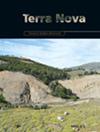Red or green: Overprinting of the climatic signal in Miocene sediments, South China Sea (IODP Expedition 368, Site U1502)
IF 1.7
3区 地球科学
Q2 GEOSCIENCES, MULTIDISCIPLINARY
引用次数: 0
Abstract
Sedimentary beds of alternating red and green colour are commonly interpreted to reflect orbitally- forced cyclic climatic, syn- depositional conditions, although colour changes caused by post- depositional fluids are also documented. Results from IODP Hole U1502A marine sediments in the South China Sea exemplify post- depositional reducing fluid– rock interactions that locally changed the sediment colour from red to green. Petrographic, rock magnetic and paleomagnetic data on cores show that the red colouration originates from an early, basin- wide, pervasive diagenetic oxidation event (forming haematite), whereas the green colouration results from subsequent fluid- driven reduction (forming pyrrhotite- magnetite). The dense sulfidic stockwork in the basaltic basement underlying these sediments was the likely source of reducing fluids. Drilling deep holes into marine basin basements can thus provide useful information on fluid transfer from the basement to the overlying sedimentary layers.红或绿:南海中新世沉积物气候信号的叠印(IODP考察队368,站点U1502)
红色和绿色交替的沉积层通常被解释为反映了轨道强迫的旋回气候和同沉积条件,尽管沉积后流体引起的颜色变化也有记录。南海U1502A孔IODP海相沉积物的结果表明,沉积后的还原性流体-岩石相互作用使沉积物的局部颜色从红色变为绿色。岩心的岩石学、岩石磁学和古地磁资料表明,红色着色源于早期盆地范围内的普遍成岩氧化事件(形成赤铁矿),而绿色着色源于随后的流体驱动还原(形成磁黄铁矿-磁铁矿)。这些沉积物下的玄武岩基底中密集的硫化物网可能是还原性流体的来源。因此,在海相盆地基底钻深孔可以提供有关基底向上覆沉积层流体转移的有用信息。
本文章由计算机程序翻译,如有差异,请以英文原文为准。
求助全文
约1分钟内获得全文
求助全文
来源期刊

Terra Nova
地学-地球科学综合
CiteScore
4.80
自引率
8.30%
发文量
59
审稿时长
2.3 months
期刊介绍:
Terra Nova publishes short, innovative and provocative papers of interest to a wide readership and covering the broadest spectrum of the Solid Earth and Planetary Sciences. Terra Nova encompasses geology, geophysics and geochemistry, and extends to the fluid envelopes (atmosphere, ocean, environment) whenever coupling with the Solid Earth is involved.
 求助内容:
求助内容: 应助结果提醒方式:
应助结果提醒方式:


